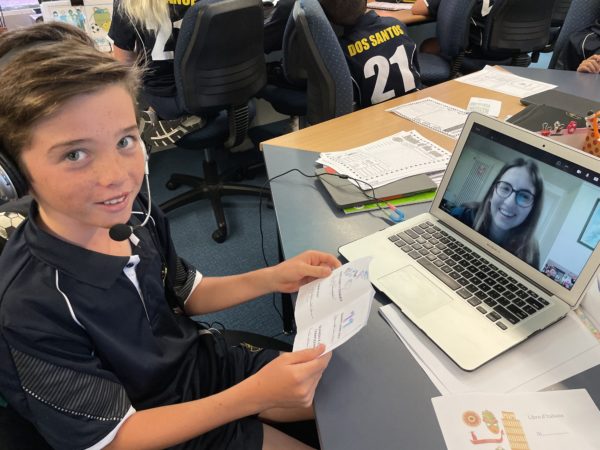Great Ideas On Choosing Italian Primary Teaching Aids
Wiki Article
What Educational Technology, Manipulatives And Visual Aids Are Suitable For Italian Preschools?
Italian nursery schools could benefit from the use of technological aids such as visual aids, manipulatives and visual aids to support children's learning. Here are a few examples Manipulatives. Manipulatives can be used by children as a way to explore and to learn. They also help them improve their fine motor skills. Examples of manipulatives that may be suitable for Italian preschools include pegboards, blocks, puzzles, sorting games, and stacking toys.
Visual aids: Visual aids can aid children in understanding and remembering concepts, as well as encourage language development. Visual aids for Italian Kindergartens include charts, pictures, flashcards, posters and maps.
Technology for education: Educational technological resources can assist students to learn and enhance their performance. For Italian nursery schools, educational technology may include touchscreens that have educational applications, whiteboards that are interactive, as well audiovisual equipment for displaying educational animations.
It is crucial to remember that all educational materials employed in Italian nursery schools should be safe, appropriate for children of all ages and relevant to the culture. The materials used should be selected with the needs and interests of each child in mind. Teachers and parents should review and revise their materials frequently to ensure that they are fun and useful for the students. Check out the top rated materiale didattico italiano for blog examples.

What Are The Recommended Maths Educational Aids In Italian Preschools?
Materials and educational aids that teach mathematics can help children develop their spatial and problem-solving abilities. Some examples of recommended materials include: Counting manipulations: The use of counting manipulatives such as counting bears and blocks can help children develop their skills in counting as well as fine motor abilities and hand-eye coordination.
Number charts and cards: Charts as well as cards can be used to teach children numbers and how to count. It is possible to use large, vibrant numbers on the wall, or smaller ones for kids to hold and manipulate.
Shape manipulatives. Children can be taught about different shapes through manipulatives for shapes. These include wooden puzzles, pattern blocks, and magnetic tiles.
Measuring tools: Measuring and measuring tools, such as rulers, measuring instruments, and scales, can assist kids to build and expand their mathematical vocabulary.
Simple games are used to improve the problem-solving abilities of children. They also assist them to improve their concentration and their concentration.
Technology-based aids Tablets and other technology-based aids like tablets with educational math apps and games can be a great way to engage youngsters and offer additional resources for learning.
Use these materials in an age-appropriate way and make sure they're safe and appropriate for children. These materials are perfect for parents and teachers who wish to design exciting and engaging math games that encourage children's curiosity. Have a look at the most popular materiale didattico matematica for more examples.

What History Didactic Cards Should Be Used In Italian Nurseries?
History-related didactic cards are a fantastic way to introduce young children to historical concepts in Italian nurseries. There are many kinds of cards that are related to history. The cards may include pictures of the person and information regarding their life and achievements.
Timeline Cards: A Timeline card helps children comprehend how the historical events are interconnected. Illustrations are a great way to illustrate important dates and crucial events.
Cultural cards are a wonderful opportunity for children to learn more about the cultures of the past and present. These cards can include illustrations of traditional attire, food, music and customs.
Artifact cards: Artifact cards can help children visualize and understand historical events and ways of life. Illustrations can be used to illustrate objects from various civilizations and historical times.
Map cards: Map cards can help children understand the geography and background of different regions and countries. They may include maps with illustrations as well as information about historical events, individuals and places from different regions.
It is crucial to choose the right history-related educational materials that are appropriate for children of all ages, fun, and interactive for young children. Teachers and parents can make use of these cards to create engaging and interactive games about history that will stimulate children's enthusiasm and curiosity for the past. Take a look at the top materiale didattico storia sostegno for more advice.

What Teaching Resources For Geography Do Italian Nurseries Require?
In Italian nurseries, geography teaching materials are used to teach children about the world as well as different cultures. A few examples of the resources that you can use to teach geography include maps. Maps are helpful in helping children understand the diverse regions and countries and also the places of landmarks and natural characteristics.
Globes: Globes enable youngsters to understand the continents, oceans, and other features of the Earth.
Videos and pictures. Videos and photos of different places, cultures, and people can teach children a lot about the world.
Books that are age-appropriate, appropriate for children with a variety of cultures and places can help children develop an understanding of geography as well as a sense curiosity about the world.
Natural materials. Rocks, shells and plants can help children learn about different environments and eco-systems.
Field Trips: Kids can learn valuable geography through excursions to local parks, zoos and museums.
It is crucial to select geography teaching materials that are appropriate for children's age and culturally sensitive. These materials let caregivers and teachers to create fun and interactive activities to promote children's love of learning and curiosity.
